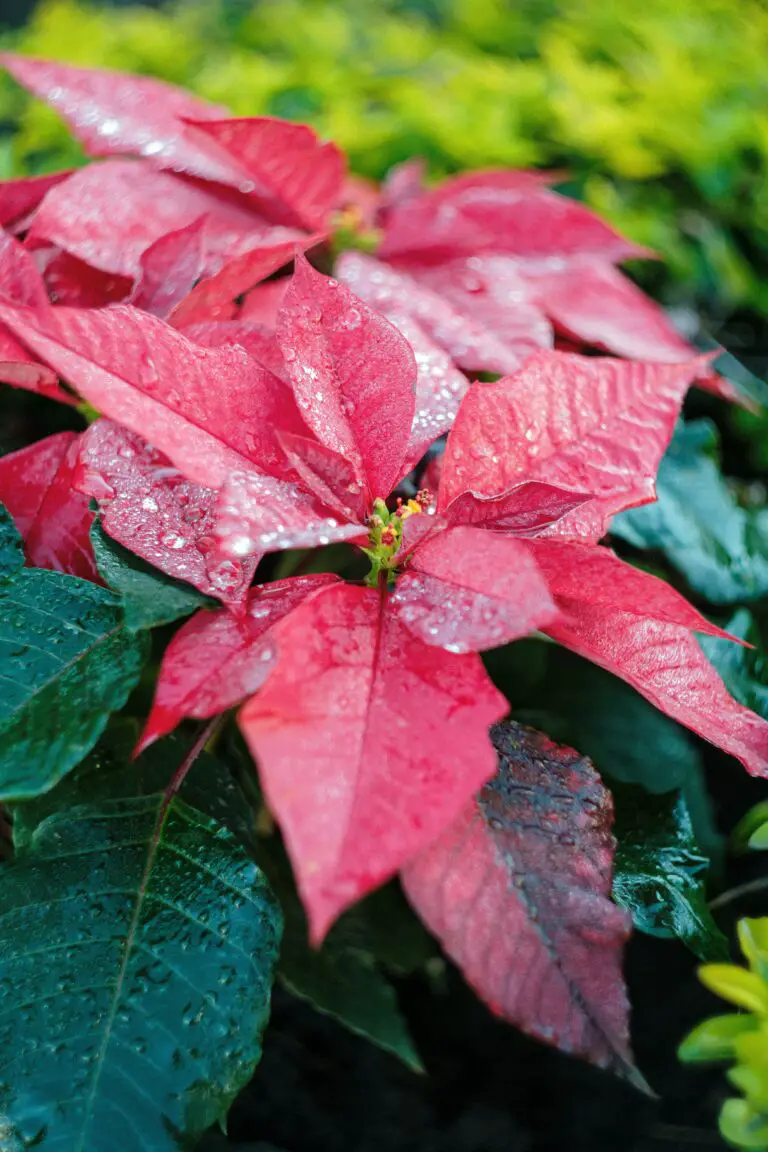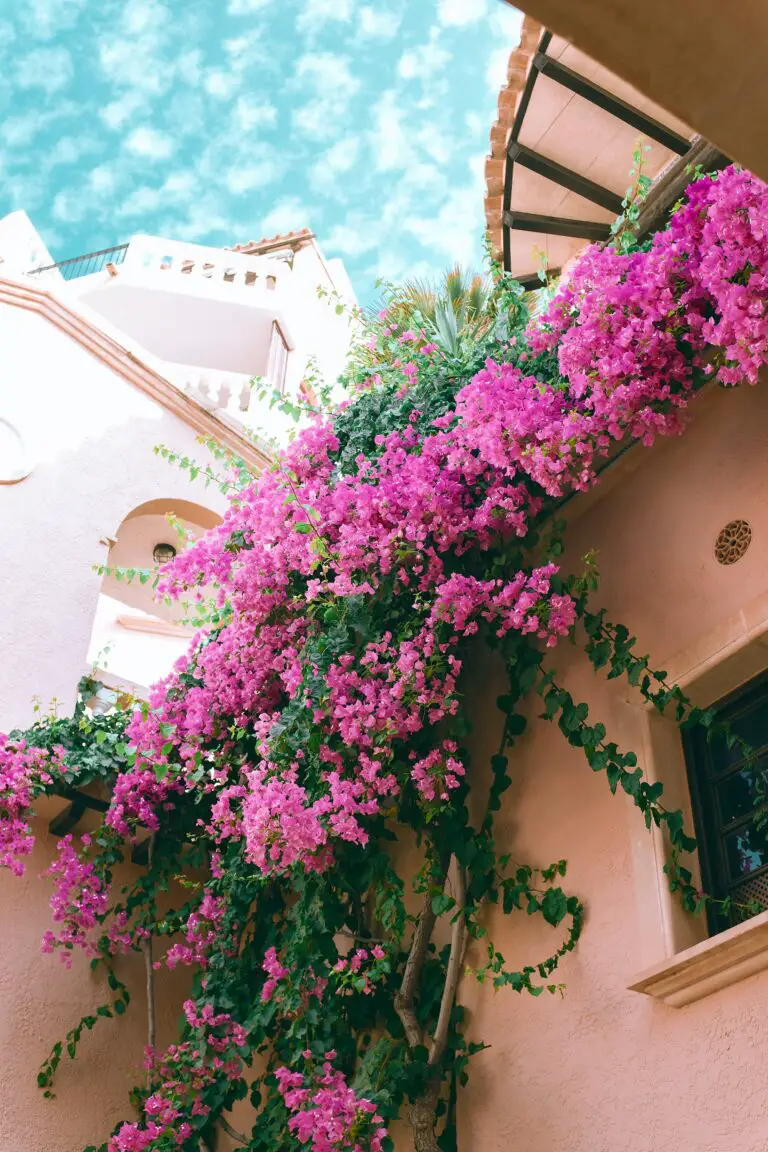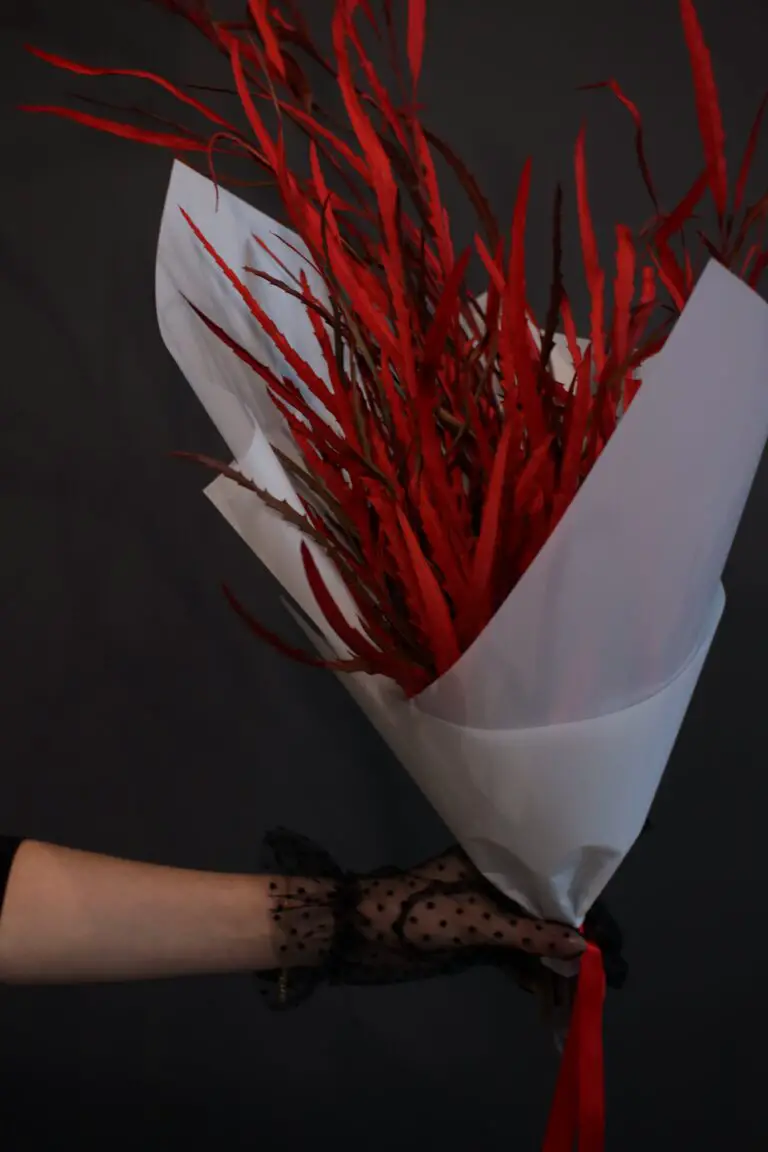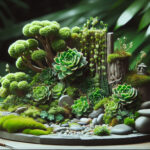Introduction to Crassula Plants
Dive into the captivating world of Crassula, a genus loved by succulent enthusiasts. Understand the basic characteristics that define these drought-resilient wonders.
Picture a plant that thrives where others would wither, a plant that stores water in its plump leaves, ready to stand tall against the harshest sunbeams. That’s Crassula for you. These hardy plants have become the go-to companions for those seeking a blend of low-maintenance care and aesthetic appeal.
Imagine walking into a room and being greeted by the serene presence of a Crassula ovata, commonly known as the Jade Plant. It’s not just a plant; it’s a living sculpture, a testament to endurance and beauty. Its thick, woody stems and glossy leaves are often a subject of fascination and, yes, sometimes concern when they start to take on a crimson hue—prompting the question, “Why are my Crassula’s leaves turning red?” But let’s not get ahead of ourselves.
These succulents aren’t just surviving; they’re thriving—thanks to their incredible adaptability and resilience. With a lineage tracing back to arid landscapes, they’ve evolved into a diverse family with over 200 species, each with its unique charm.
Take the Crassula ‘Hobbit’ for instance, a real-life example of what happens when Mother Nature decides to have a bit of fun. Its leaves curl into odd, tubular shapes that wouldn’t be out of place in a whimsical fairy tale garden. It’s plants like these that remind us that nature truly is the greatest artist.
If you’re new to the world of Crassulas, or even if you’re a seasoned succulent collector, knowing the ins and outs of their care is crucial. Let’s learn more about these fascinating plants.
Unraveling the Mystery: Reddening of Crassula Leaves
Have you ever gazed upon your cherished Crassula, only to find the once lush green leaves transforming into a tapestry of crimson? This sudden change in foliage color can often be puzzling, but fear not, plant enthusiasts! We’re about to explore the common reasons behind this mysterious color shift, ensuring your succulent companion continues to thrive.

The Crassula, commonly known as Jade or Money plants, are resilient succulents admired for their easy care and beautiful appearance. A red hue embracing the edges of these fleshy leaves is a spectacle to behold. Yet, this transformation from green to red isn’t just about aesthetics; it’s an insight into the plant’s current state. A Crassula basking in the generous rays of the sun may develop a ruby blush as a form of sunblock. Just like us, plants need protection from the ultraviolet light, and this red pigment, anthocyanin, is their sunscreen!
Aside from sun exposure, temperature drops, especially during the sharp evenings of fall or spring, can also stimulate Crassula to don their red attire. This change is akin to the leaves shaking up their wardrobe as seasons shift. But understanding the fine line between a natural response and stress is crucial. Sudden redness, combined with other worrisome symptoms like drooping or dry, crispy leaves may signal a SOS from your succulent friend.
On the other end of the spectrum, a lack of sunlight can lead to a pale and uninspired Crassula. Much like a celebrity without their spotlight, a succulent in the shadows loses its vibrant charm. A Crassula yearning for light may stretch out its leaves, an act of plant desperation to catch those eluding rays. Thus, a well-lit location is vital for maintaining the natural beauty and health of these charming green companions. A care guide shared by experts can offer valuable tips to ensure you’re providing just the right amount of sunshine for your Crassula.
Understanding these changes is not just about responding to a plea for help; it’s about forging a connection with your Crassula, reading its leaves like a seasoned storyteller. Embrace the red; celebrate its beauty. But also, remain vigilant, ready to adapt care routines to nurture the verdant vitality of your plant. So, when the crimson hue begins to creep upon the leaves, know that your Crassula isn’t just changing color—it’s communicating with you in the most beautiful way nature knows.
Sun Exposure: A Double-Edged Sword
Imagine basking in the glorious sunshine, feeling the warmth kiss your skin; your Crassula plant craves much the same. With the sun’s tender caress, a transformation unfolds—the once green leaves don a regal red attire. Yes, sunlight can enhance the beauty of Crassula plants by inducing a radiant red hue, much like a blush sweeps across your cheeks after a playful frolic outdoors. But this sunlight isn’t just about splendor and glory; it’s a complex relationship that can spiral into excess.
Picture a sun-drenched Mediterranean coastline, the Crassula basking amidst the rocks, its red intensifying as if channeling the spirit of the vivid surrounds. This natural wonder isn’t just visually stunning; it’s a protective mechanism, akin to us donning sunglasses. The crimson pigment, much like our bronzed skin following a sunny holiday, shields the plant from harmful ultraviolet rays. Yet, not all tales of sunlight end on a blissful note.

Alas, like Icarus flying too close to the sun, our resilient Crassula can succumb to the sun’s intense power. Sunburn in plants is a stark reality, leading to scorched leaves that crispen and curl—a far cry from the luscious foliage we adore. It’s crucial to find that Goldilocks zone—not too much, not too little, but just right. And that zone varies with the turning of the seasons, the shifting of the sun’s arc, and even the nuances of your plant’s placement in your abode or garden.
For those eager to unlock the full potential of their Crassula’s care, exploring further reading, like the ultimate care guide, can be an enriching endeavor. Through keen observation and savvy adjustment to light exposure, we can avoid the pitfalls of too much sun and bask in the awe of our Crassula’s radiant red transformation.
Irrigation Insights: Finding the Watering Sweet Spot
The key to a verdant and vibrant Crassula is mastering the art of balanced hydration. It’s a dance between too much and too little, where precision leads to perfection. Imagine you’re a maestro conducting an orchestra of succulents; your baton is the watering can, and every drop is a note that contributes to the symphony of growth.
If you find your Crassula blushing with shades of red, it might be a sign to re-examine your watering routine. Overwatering can lead to soggy, discontent roots, while under-watering can leave your plant gasping for moisture. Either extreme can stress the plant, resulting in that reddish tinge as a cry for help. Picture this: a Crassula plant, basking in the sunlight, its foliage glistening with just the right amount of water—like the morning dew on a new day. That’s the goal!
There’s a sweet spot to watering, and it often requires attention to the subtleties of your plant’s environment. A few golden rules to follow are checking the soil’s moisture before watering, ensuring your pots have adequate drainage, and recognizing the unique thirst of your succulent friends during different seasons.
Let’s set the stage with an example: It’s a typical scorcher of a summer day, and your Crassula’s leaves begin to pucker slightly. You might think it’s time for a drink, but hold that watering can! A quick check of the soil reveals it’s still moist from the last watering. In this act, patience is your virtue, and waiting for the soil to dry out more would be a standing ovation-worthy decision.

Every Crassula has its own rhythm, and tuning into it is essential. Maybe your Crassula prefers weekly water waltzes in the winter and bi-weekly tangos in the summer. Monitoring closely and adjusting to the plant’s pace will ensure that the red in your Crassula is from blooming flowers and not from watering mishaps.
So, don’t fret if your green thumb hasn’t been on beat with your Crassula’s watering needs. Nurture it with mindfulness, and soon you’ll both be swaying in harmony to the rhythms of right hydration, and the only red you’ll see will be the healthy blush of a thriving plant.
Temperature Tales: When Heat and Cold Leave Their Mark
Spotting a Crassula blush with shades of red is similar to witnessing someone react to a surprise. Just like our credible Poker faces conceal excitement, the hardy Crassula holds a secret – heat and cold can dramatically affect its appearance and health. Yet some owners find themselves puzzled, asking, “Why is my Crassula turning red?” Let’s dive into the temperature tales that can bring about this fiery transformation.
Imagine snuggling in a warm bed during the winter or finding solace in the cool indoor air on a scorching summer day. Your Crassula seeks that same comfort. Subjecting it to radical temperature shifts is akin to overturning its world – the response is written all over its leaves. When temperatures rise, these plump leaves can sunbathe a little too much, triggering a defense mechanism that results in a crimson hue. It’s the plant’s sunscreen, a literal lifesaver when the mercury climbs.
On the flip side, a chill in the air can nudge your green companion into a state of red alarm. The red pigmentation acts as a protective blanket, safeguarding the plant against freezing conditions. It’s nature’s way of ensuring survival. The key, much like adjusting a thermostat, is to keep those temps steady. A happy Crassula resides in a consistent, comfortable climate, free from the shock of sudden temperature changes – be it the spark of the sun’s kiss or the embrace of winter’s chill.
To maintain your Crassula’s rich, earthy green, monitor their surroundings like a hawk. Avoid placing them near drafty windows or doors in the winter, and during spikes in summer heat, provide some shade. Remember, while they adore a good dose of sunlight, they despise extreme weather parties. So, if you’re squinting outside, your plant pal might be silently begging for sunglasses or a nice, shady retreat.
The transformation isn’t immediate – it’s a slow dance with the elements. Adjust the temperature dance floor, and watch as your Crassula stays true to its verdant charm, or alternatively, reveals its crimson tint as a badge of honor. Whatever the shade, understanding the warmth and chill in your Crassula’s life spells the difference between a thriving spectacle and a survivalist’s tale of colors.
Feeding Your Crassula: The Nutrient Balance Act
Ever witnessed the Crassula’s dance of colors, where the green leaves subtly turn to a captivating crimson? It’s a performance controlled by the conductor of nutrients, and getting the balance just right deserves a standing ovation from every plant enthusiast. Let’s delve into the art of feeding your Crassula correctly and maintaining the lush, vibrant palette it’s known for.
Picture this: an impeccably cared-for Crassula, sitting on your windowsill with a blush of red that enchants every onlooker. While the red tint can be a sign of happiness, catching the sun’s rays in just the right amount, it can also be a cry for help, a signal from your plant that it’s in dire need of a nutritional check-up. The red alert may be due to either an excess or a lack of certain nutrients, and understanding this balance is crucial for your Crassula’s well-being.
Too much love in the form of fertilizers can push a Crassula into the red zone, quite literally. Nitrogen overload, for one, can lead to a fiery foliage display. Conversely, a deficiency in nutrients like phosphorus can result in your green gem losing its sparkle, leading to reddish hues as well. It’s a fine line to walk, and your plant relies on you to toe it carefully.
Real-life examples abound where Crassula owners have corrected their nutrient regimen and witnessed a spectacular transformation. A simple adjustment in the feeding schedule, or a switch to a more balanced fertilizer, can turn a wilting, reddened Crassula back to its emerald elegance. Just like an expert chef knows just the right amount of spice to add, you too can master the recipe for a perfect Crassula feast!
Incorporating a video can provide a visual guide to complement this information. Here’s one that illustrates tips for ensuring a healthy Crassula:
To sum it up, striking the right nutrient balance for your Crassula is akin to being a master gardener-conductor. It’s about harmonizing the elemental notes to a symphony of growth and coloration. The red leaves might just be your Crassula’s way of asking for a little tuning, so take the time to listen and adjust. With the right knowledge and care, you can keep your Crassula hitting the high notes and looking its radiant best.
Crassula Cultivation: Best Practices for Healthy Growth
Crassula plants, with their incredible adaptability and varied forms, are a testament to the wonders of nature. However, sometimes, they can be a bit of a puzzle to figure out. As your Crassula begins to don a rosy hue, you may find yourself asking, “Why is my crassula turning red?” Well, often it’s not a cause for concern but a sign of a thriving plant, catching a suntan. But to ensure your green companion stays happy, let’s dig into the best practices for robust Crassula cultivation.
Lights, camera, action – your Crassula’s health depends greatly on the spotlight it gets. Sunlight is the secret sauce to that lush, green growth, and your plant needs a good dose of it, especially during the growing season. Find a window with bright, indirect light and let your Crassula bask like it’s on vacation. Too much direct sunlight though and it might go from sun-kissed to sunburnt, so watch out for that.
Soil and Potting: Laying the Foundation
Imagine if you could choose your perfect house – that’s what proper potting is for your Crassula. A spacious pot with a drainage hole at the bottom is like a dream home for these plants. It keeps their roots from drowning in excess water and provides the good drainage they so love. Speaking of water, these succulents like their soil on the dry side, so make sure the potting mix is well-draining. A cactus mix or a concoction of regular potting soil with some sandy or perlite goodness is ideal.
Pruning and Propagation: The Generation Game
Pruning isn’t just about aesthetics; it’s about health and propagation too. Regularly snapping off leggy stems can encourage bushier growth. Those same stems can turn into brand new plants with a simple propagation technique. Just stick them in some soil, and voila, you’ve got yourself a mini-me of your Crassula. But remember, they’re like teenagers – give them space and time, and they’ll thrive.
Witness the marvel of propagation with this hands-on demonstration that will guide you through the process of giving life to a new Crassula from your existing plant:
Preventative Care: The Unsung Hero
In the world of Crassula cultivation, an ounce of prevention is worth a pound of cure. Like a silent guardian, preventative care wards off the unseen threats of pests and diseases. Keep an eagle eye out for signs of trouble like scale, mealybugs, or fungal infections. Act swiftly with insecticidal soap or neem oil at the first signs of invasion. Regular check-ups and clean, sterilized pruning tools are the shields that protect your Crassula from harm’s way.
Engaging in these best practices will not only keep your Crassula healthy but also bring out its true potential. With these tips, the next time someone asks, “Why is my crassula turning red?” you might just respond with a proud smile, knowing it’s the mark of your tender loving care and cultivation prowess.
Frequently Asked Questions
Watching your Crassula suddenly start to blush with tones of red can be both fascinating and alarming. Let’s dive into those burning questions you might have about why your green companion is turning a tantalizing shade of red.
Why Is My Crassula Showing Red Pigmentation?
Crassula plants are known for their hardy nature and jade-green hue. But when they start sporting a red or crimson edge, it’s often a sign they’re soaking up more sunlight than usual. Just like us getting a tan, Crassulas develop a red pigment to protect themselves from intense rays. It’s their version of sunscreen!

Could Cold Weather Be Turning My Crassula Red?
Absolutely! These succulents can change color with the seasons, just like the leaves of autumn. When temperatures drop, Crassulas may put on a red coat, which not only makes them look stunning but also helps them conserve energy. It’s their snazzy way of dealing with the cold.
Is Redness in Crassula a Symptom of Stress?
It can be. Just like people, plants show stress in different ways, and turning red is one of them for Crassulas. If they’re not getting enough water, they might get red in the face, quite literally. It’s their silent cry for a drink!
Does The Red Color Mean My Crassula Is Dying?
Not necessarily! While a sudden shift to red might startle any plant parent, it’s usually not a death sentence. It’s simply your Crassula showing off its adaptable nature. However, if the red is accompanied by other signs, like drooping or dry leaves, it might be time to reassess your care routine.
How Can I Ensure My Crassula Stays Healthy, Red or Green?
Whether your Crassula is flaunting a ruby coat or sticking to its emerald origins, the key is balance. Adequate sunlight, water when the soil dries out, and a comfy pot are the staples of keeping your succulent happy. Monitor its colors; they tell a story about what your plant is experiencing. It’s like having a living mood ring!



